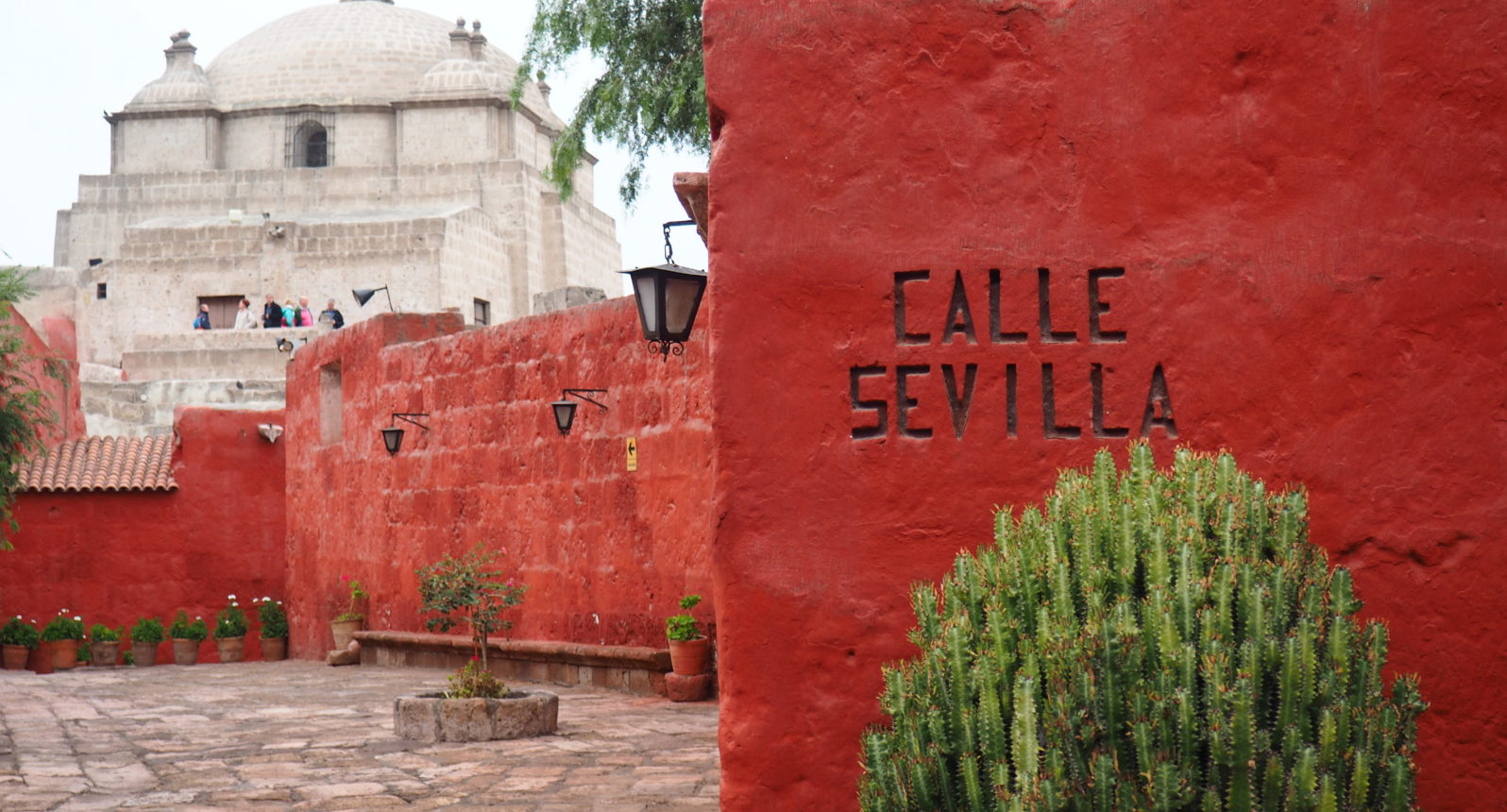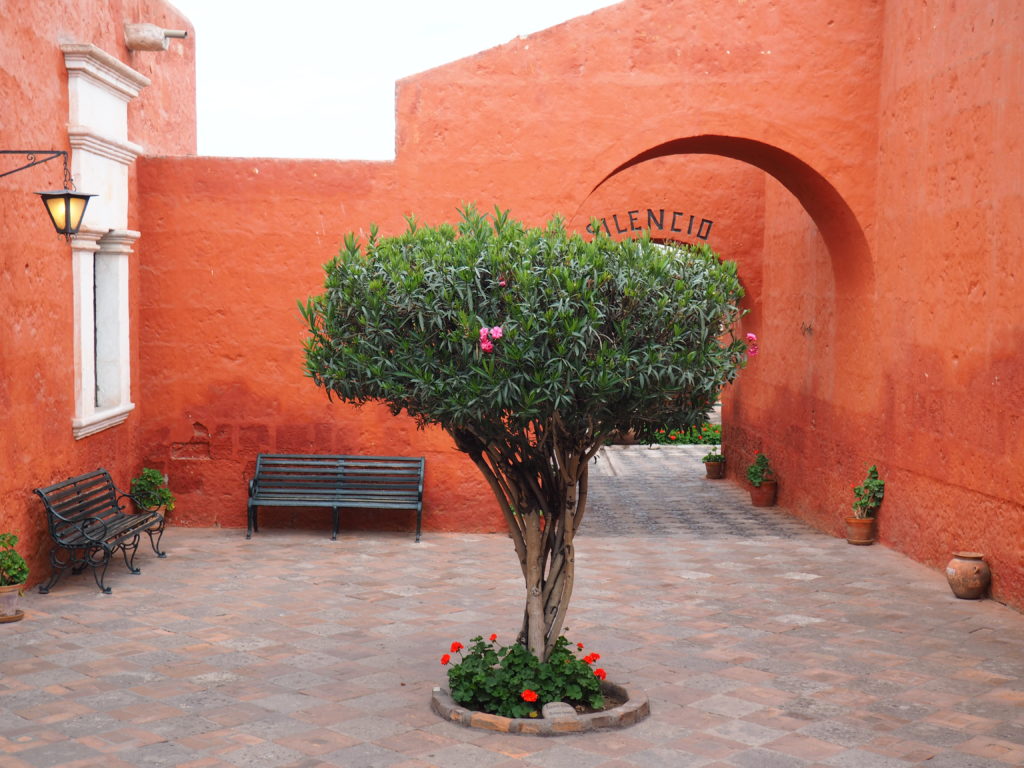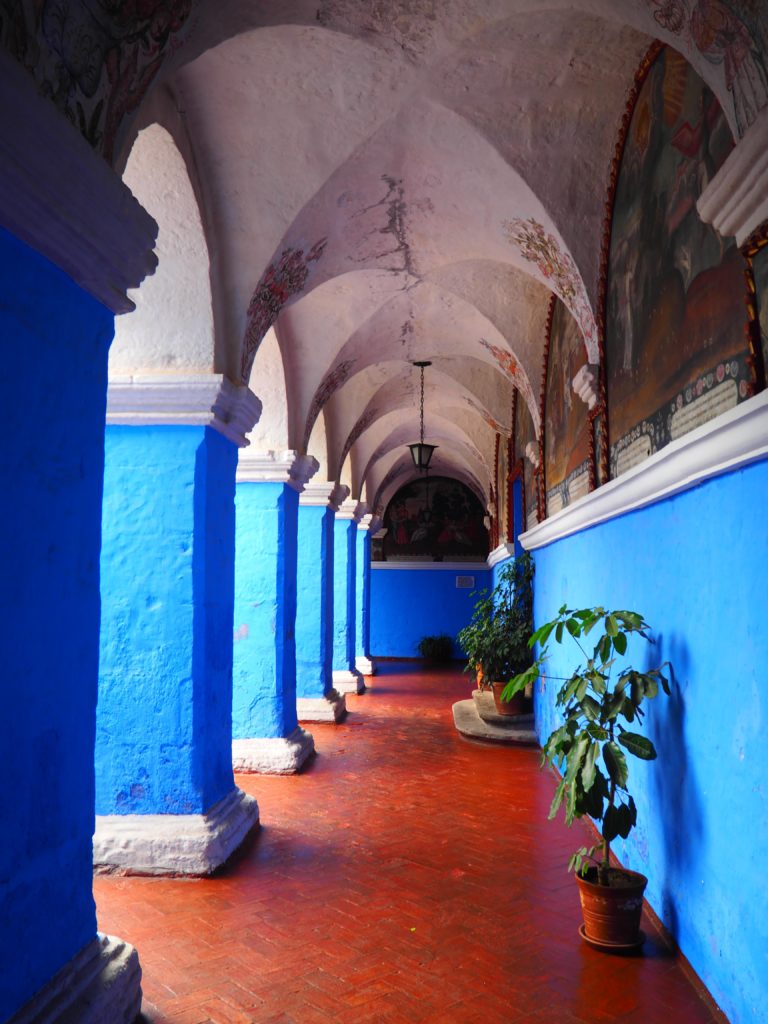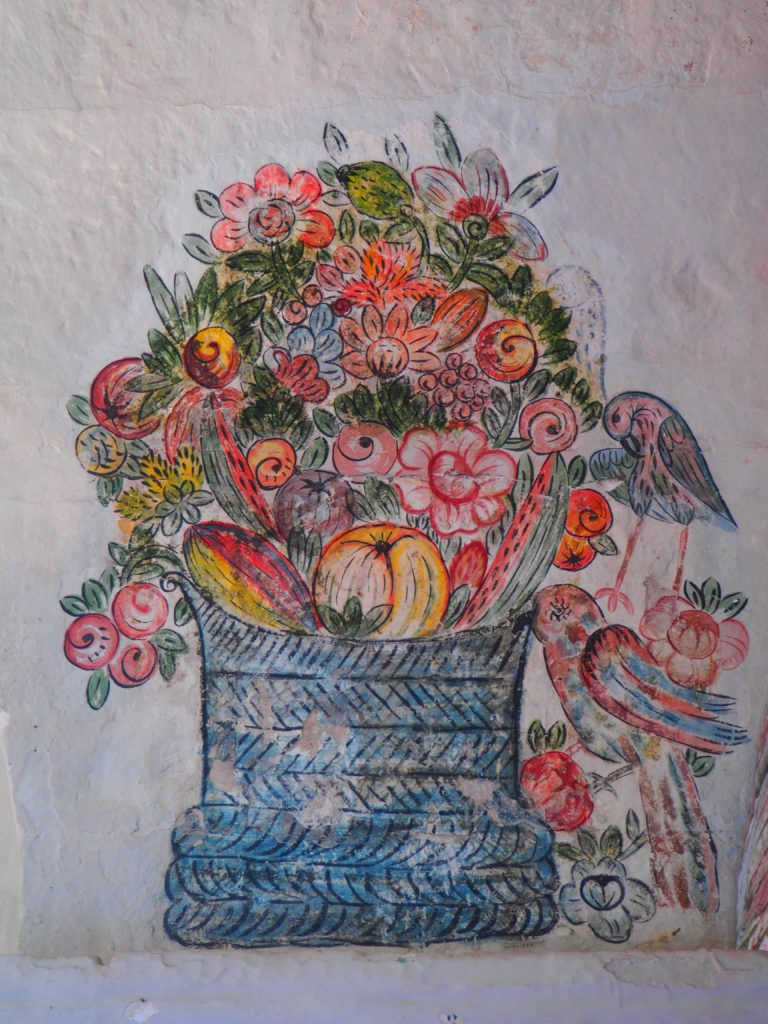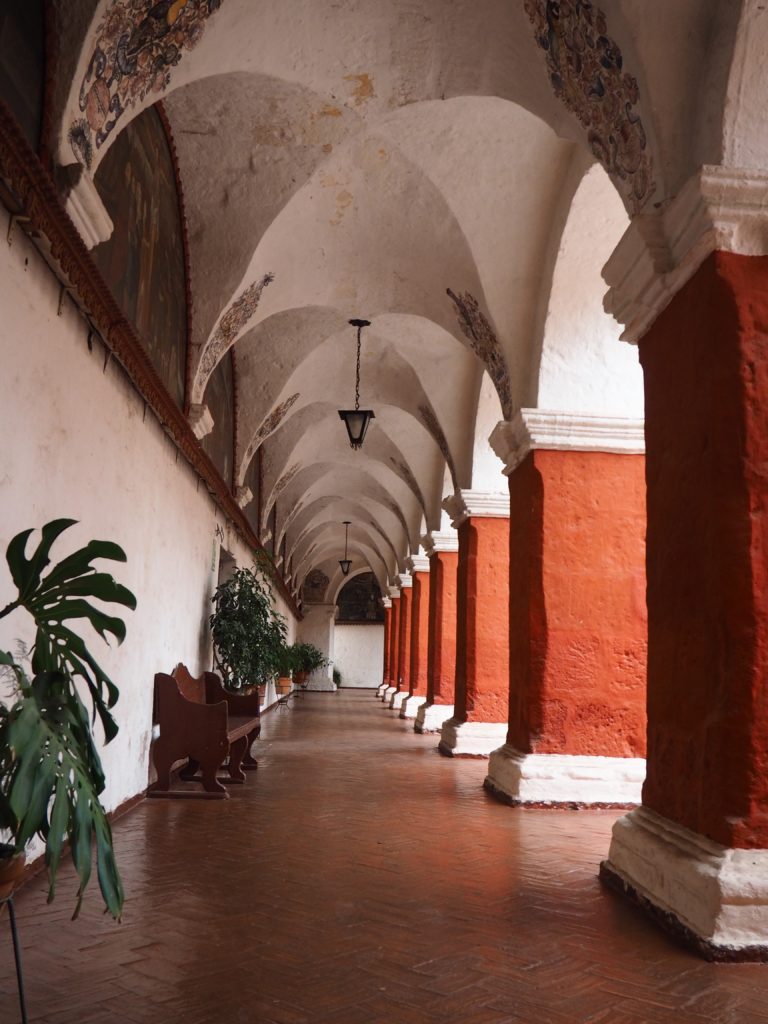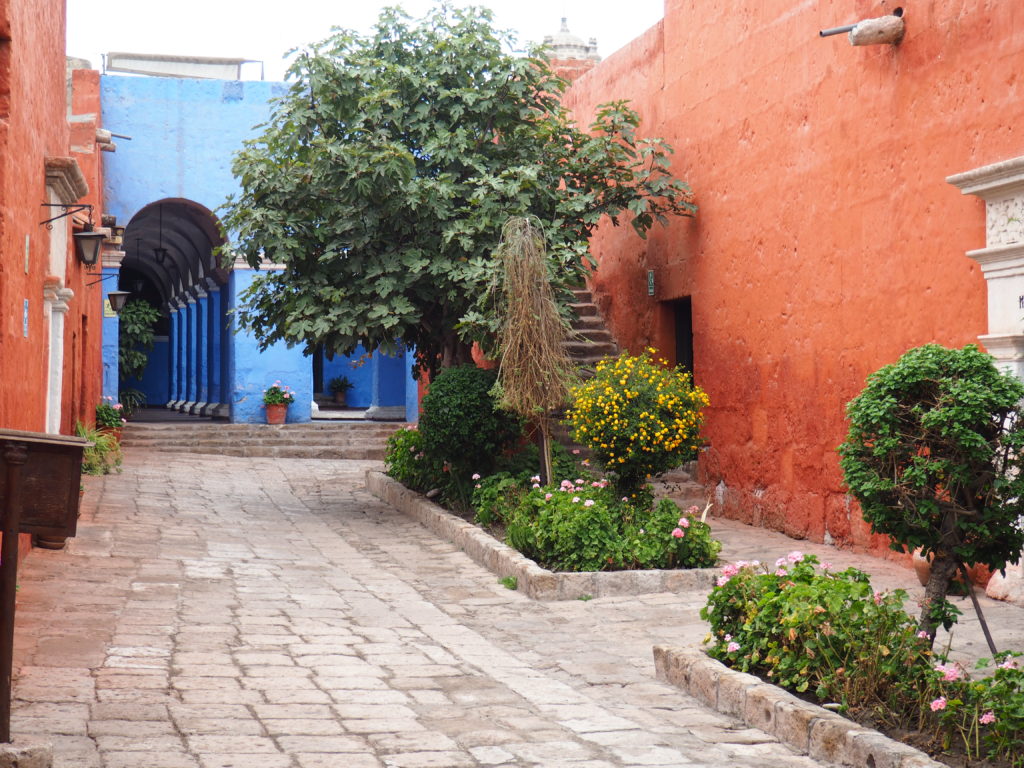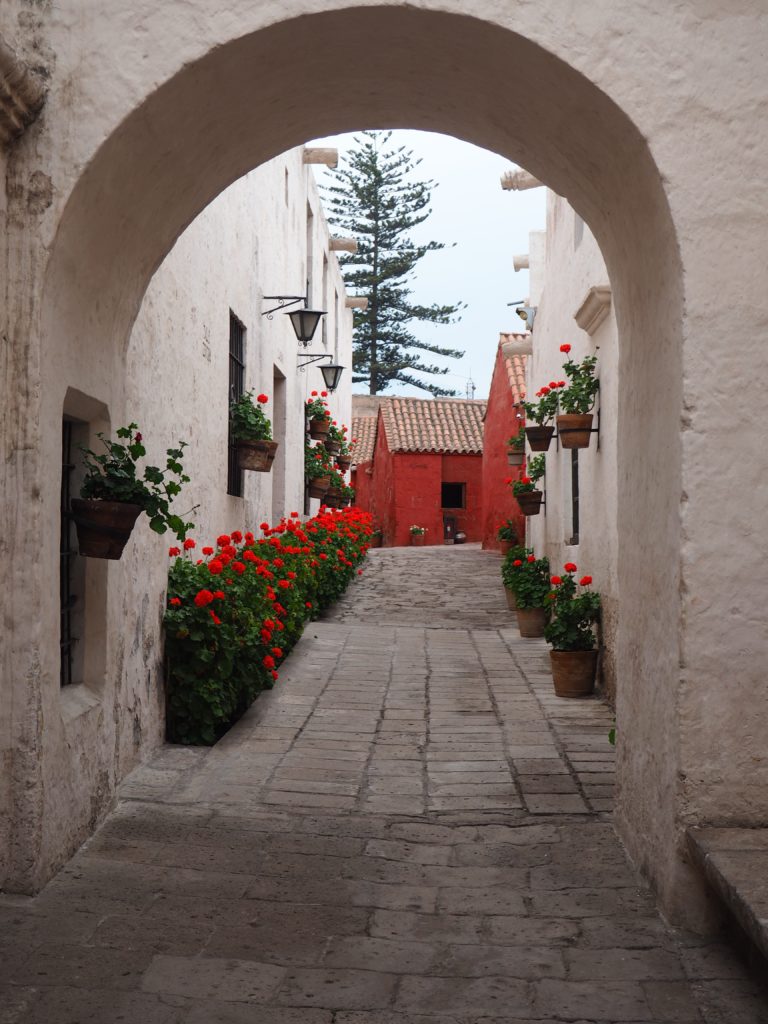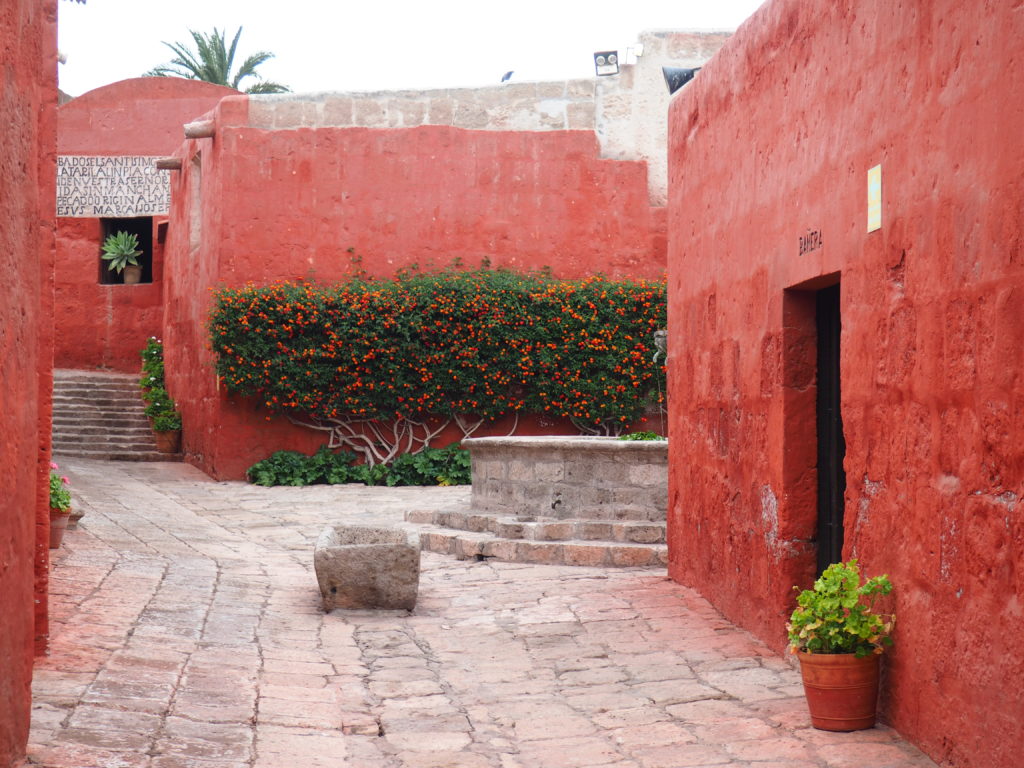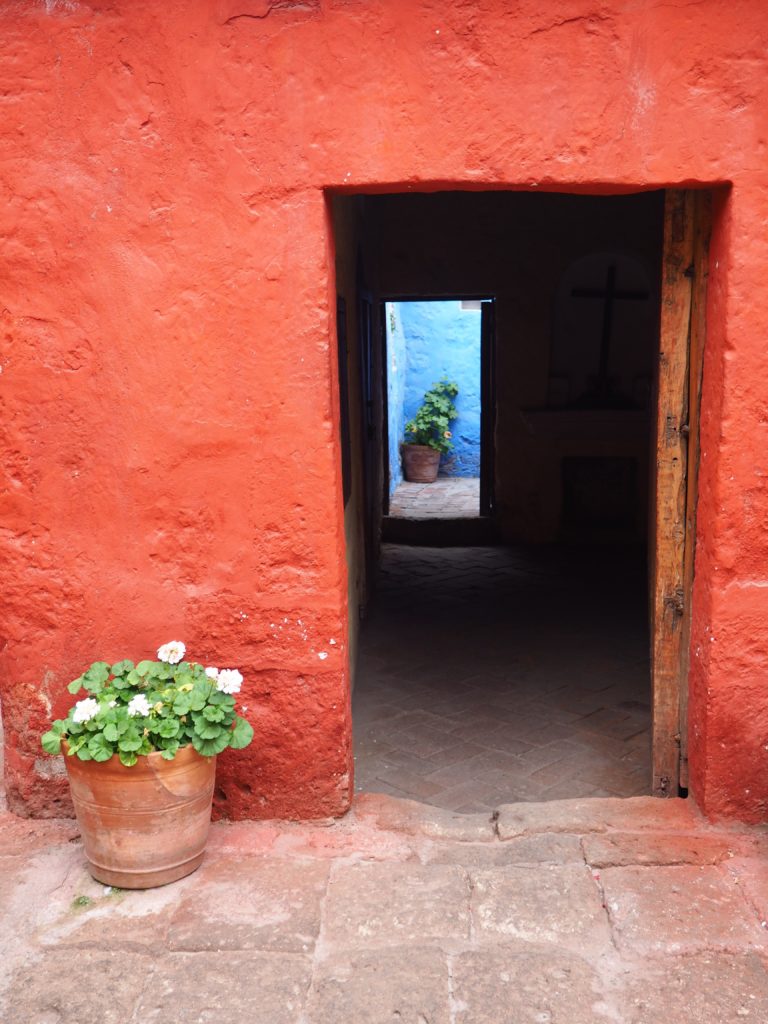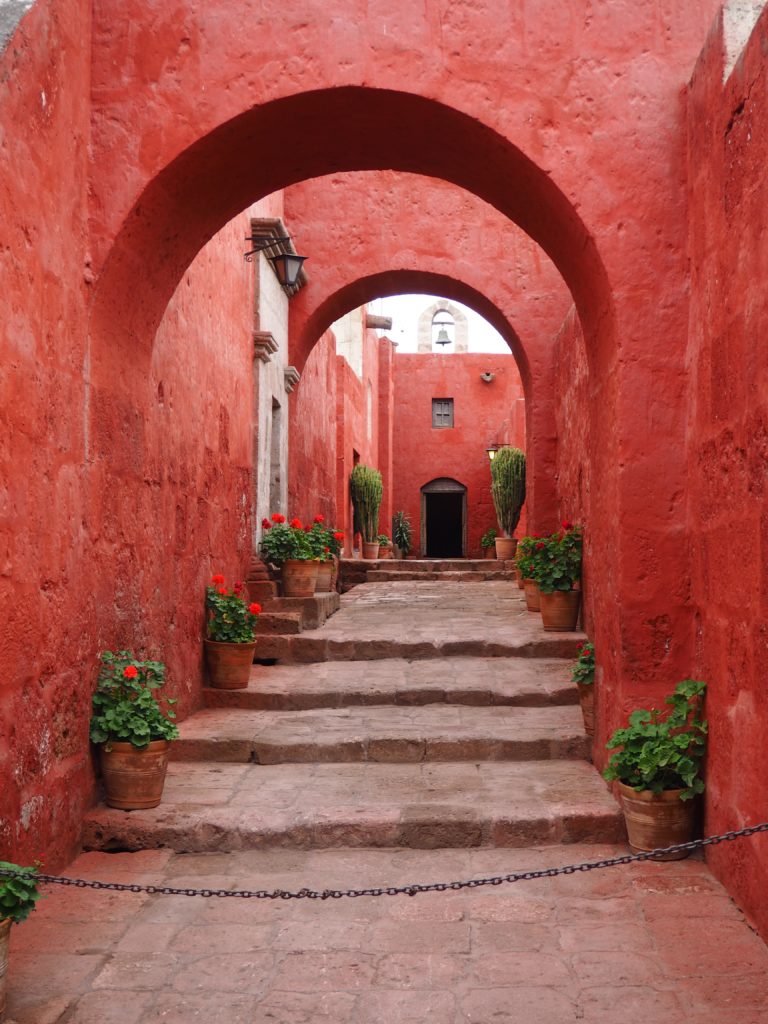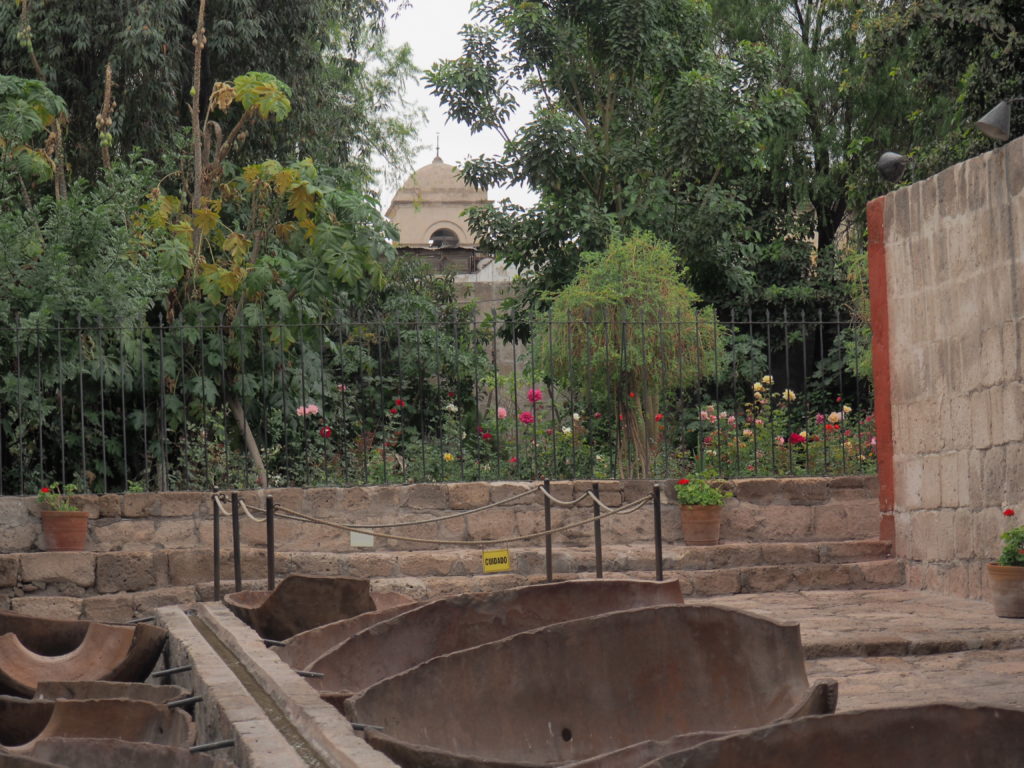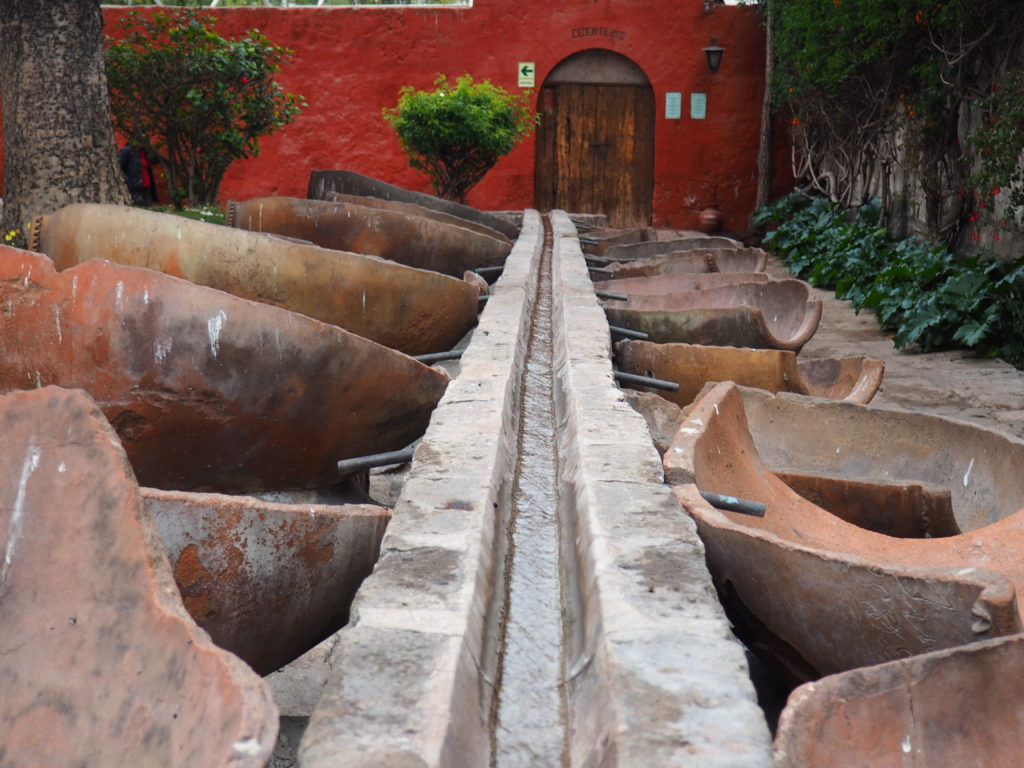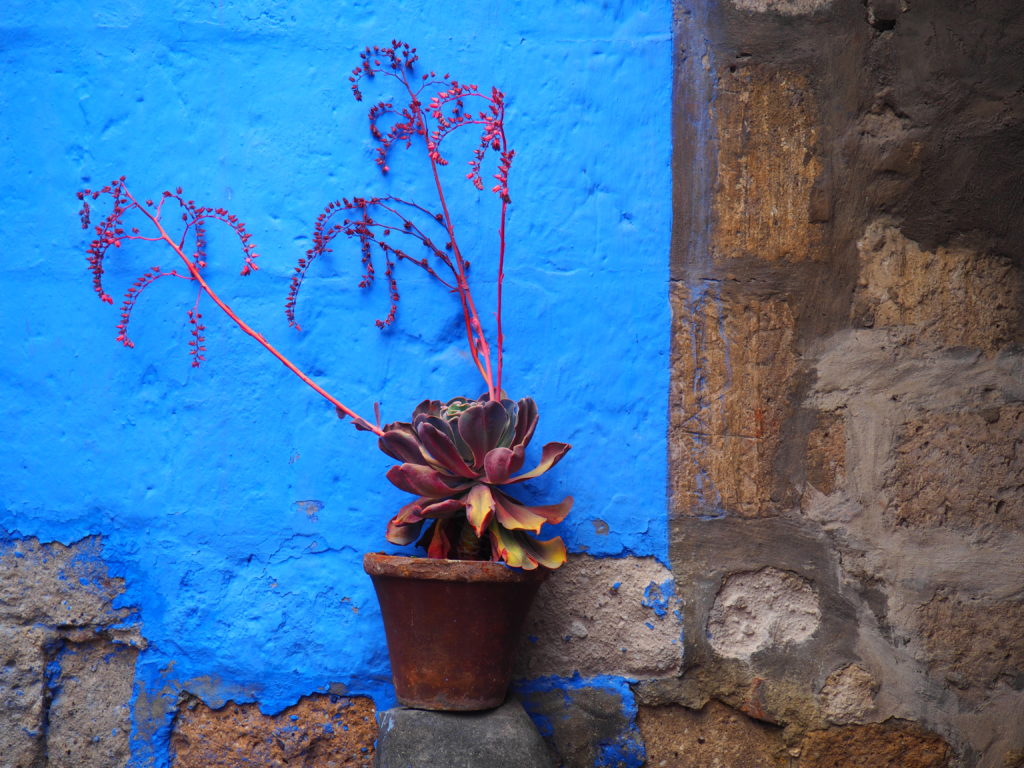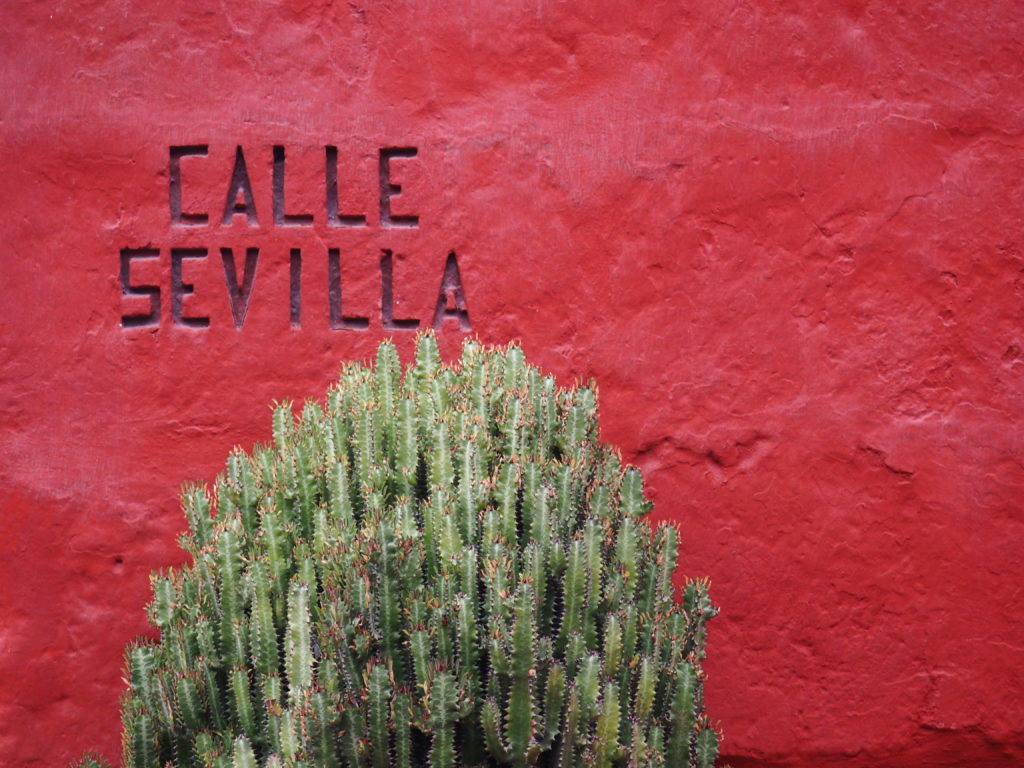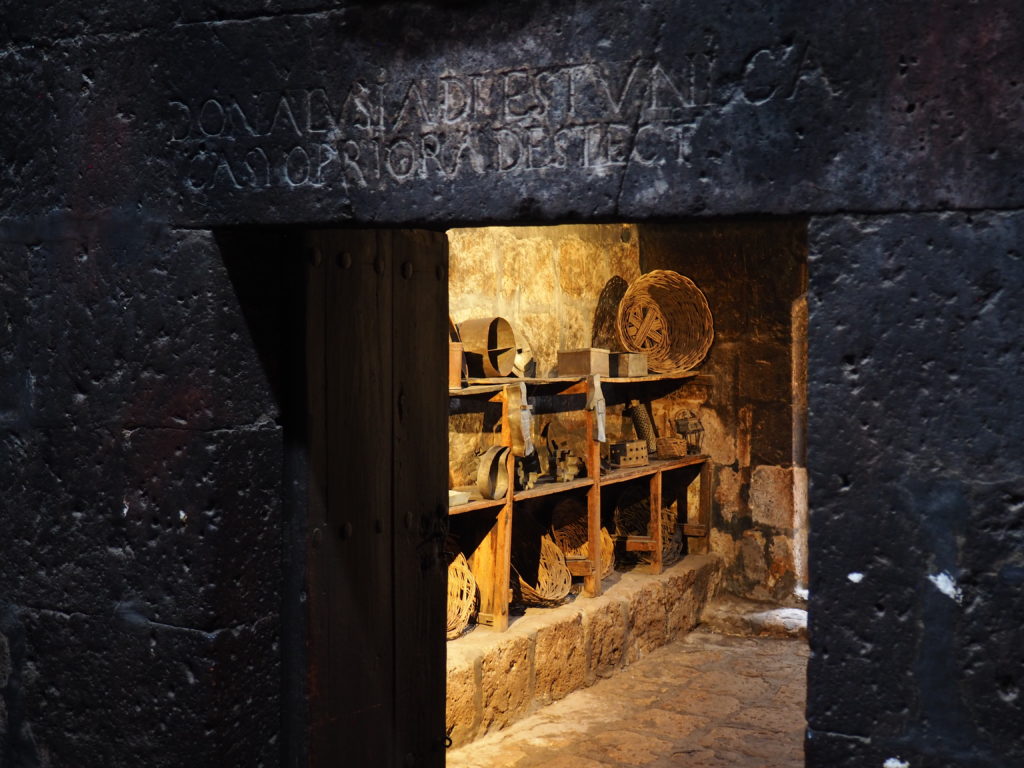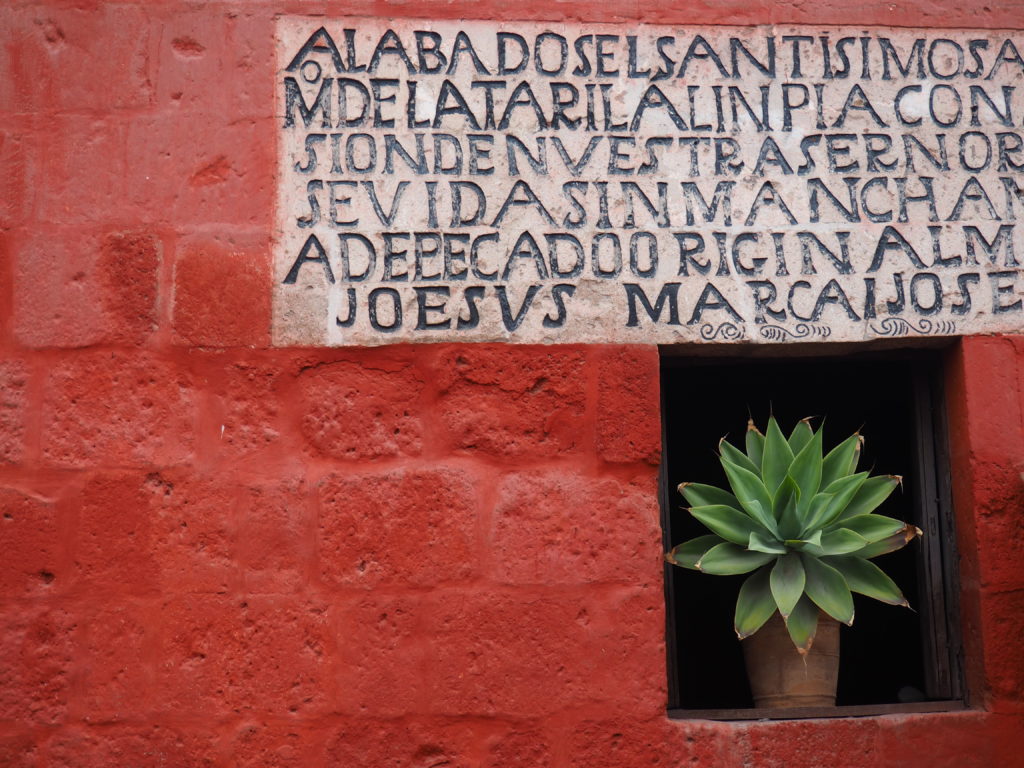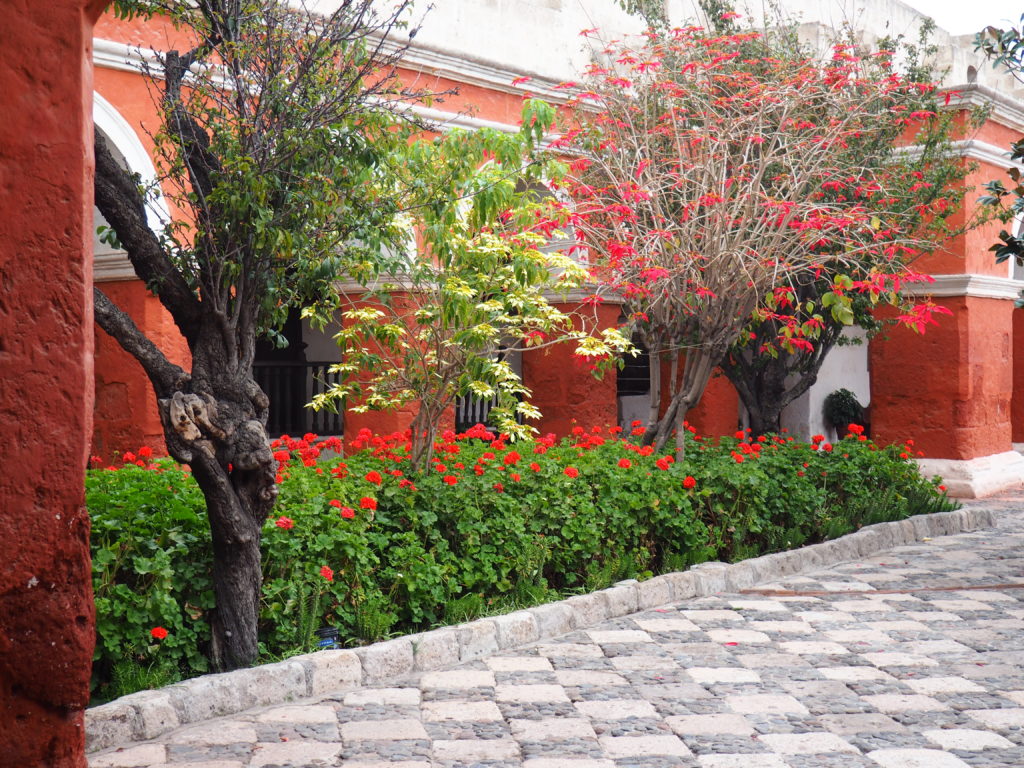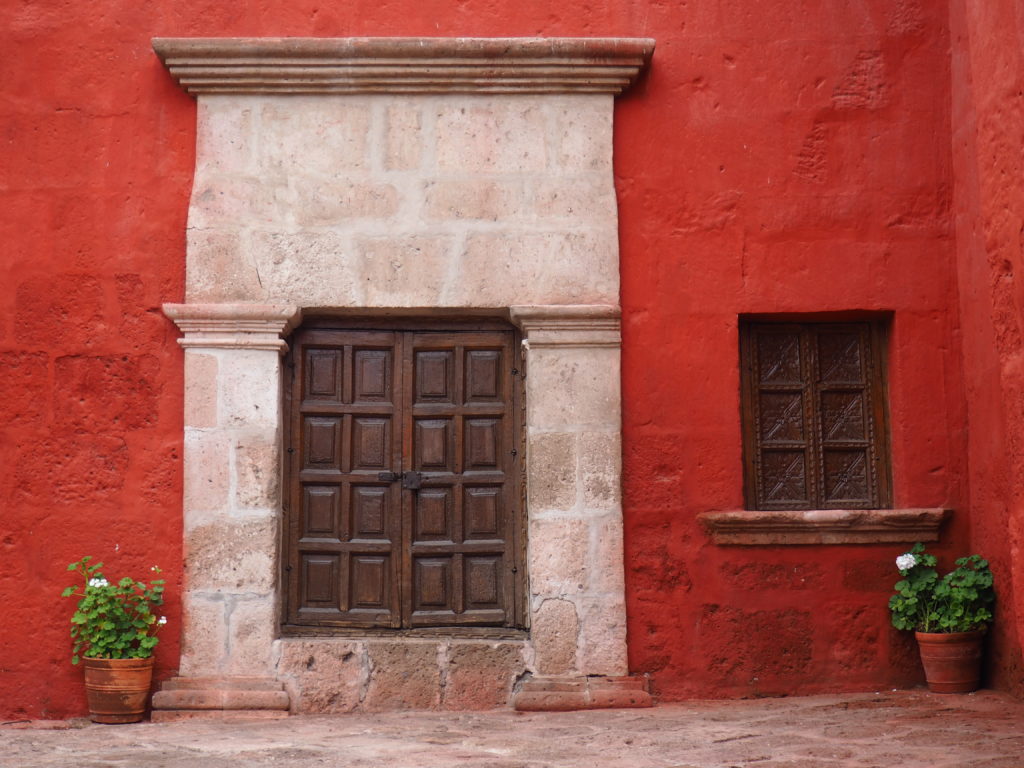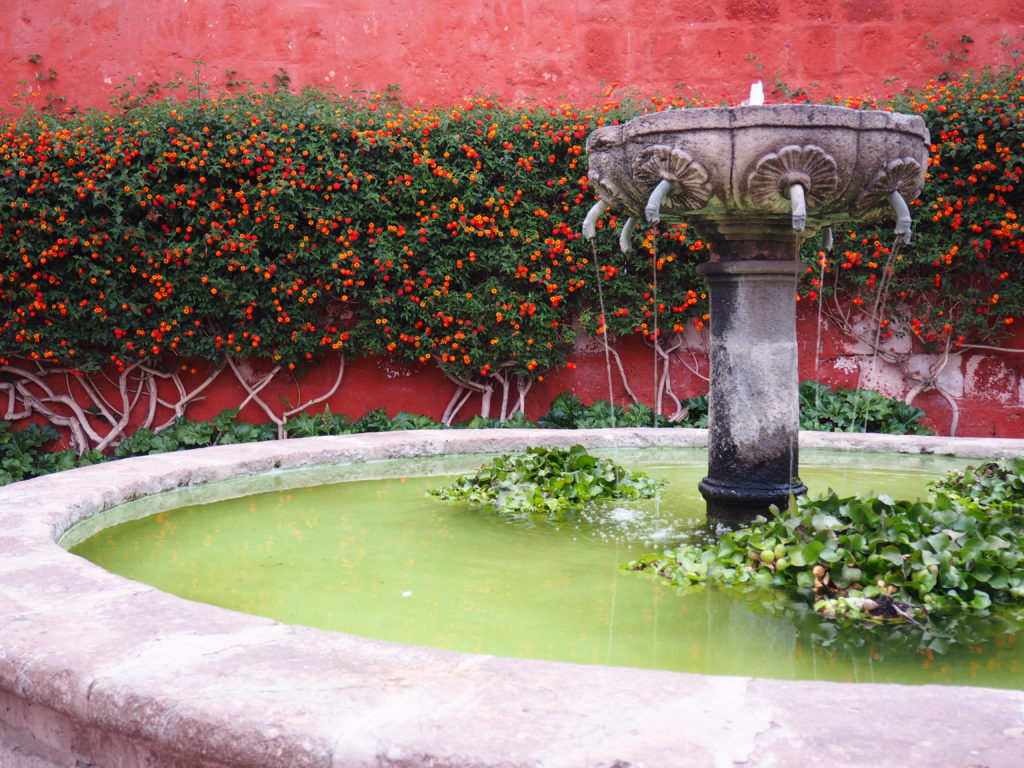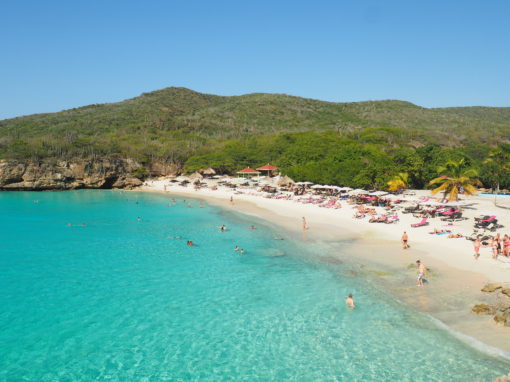WHAT: A visit to the Monasterio de Santa Catalina, that gives you a fascinating insight into the life of the nuns in Arequipa throughout the centuries WHERE: The monastery is located right in the middle of the white city of Arequipa, Peru's second largest city HOW MUCH: 40 PEN for general admission. Discounts for students HOW LONG: 2 - 3 hours for a visit will give you plenty of time in my opinion. Try to join a tour though (for another 10 PEN), since the explanation along the way is very minimal.
Following up on what to do in Arequipa, you can’t but visit the Monastery of Santa Catalina once you’ve made it to Arequipa. Admission to the complex is a little more expensive compared to other museums, but well worth the money. It was one of my favourite buildings so far in Latin America and one of the most beautiful (and inst worthy :)!) monasteries I’ve seen.
The reason why the monastery is so beloved and popular – it’s for sure the number one attraction in the city – is because it feels like you’ve travelled to another era once you’ve entered the thick walls of the previously closed monastery. Or it at least gives you an insightful glimpse at the past.
The convent is often describes as “a city within a city” and takes up an entire block of over 200,000 square feet. Indeed the convent is much more than just one building. It stars some lovely winding streets, dozens of houses, cloisters and charming courtyards and gardens. All the walls are painted in contrasting vibrant blue and orange and dotted with cacti and red flowers. Apart from that, it’s a really peaceful block right in the hustle and bustle of Arequipa.
While still active (with only 16 nuns), most of the convent is considered a thing from the past these days. You won’t interfere with the business of the remaining nuns, as they are cloistered away in a new area of the convent. Although you do actually approach that part from up close, it still feels far way, as you do not see the nuns living their separated lifes.
The “cells” of the nuns that stayed in the convent throughout the ages varied greatly depending on their wealth. The families paid for their daughters (usually the second one was obligated to become a nun. Seriously, just think of it for a moment…) to be located at the convent. The more money they brought along with them, the more luxurious their ‘cells’ were and the more servants they would have. Yes servants. Not exactly something you would expect in a convent, but some of them even had more than one.
The Vatican eventually heard of all of this and decided to change the nun’s lifestyle in the 19th century. Suddenly they weren’t allowed to live separate anymore. The servants were sent away and they had to update their own gardens and prepare their own meals afterwards. The lifestyle became a bit more communal so to say afterwards.
Unfortunately as you walk through area, the explanatory notes aren’t really providing any in-depth knowledge along the way. We walked around ourselves at first without a guide, but it felt a bit unsatisfying not knowing what every room is about. Therefore we later joined a tour. To me it was worth it, because it got to learn a little more about life behind the convent walls in colonial Peru – as told a bit about in the previous paragraphs. Of course it all depends on the guide on how many quirky inside stories you hear, but with a little luck it will make your visit all the way more special.
That all said – on a last note; did you knew the nuns are even nowadays still looking for new input? Doing your own laundry in a tub, no more bad wifi connections disturbing your vibe and mindfulnes all day long. Sounds pretty good right all ya lady hipsters out there?! They aren’t really progressive on the gender issue though, so sorry on this one guys!
